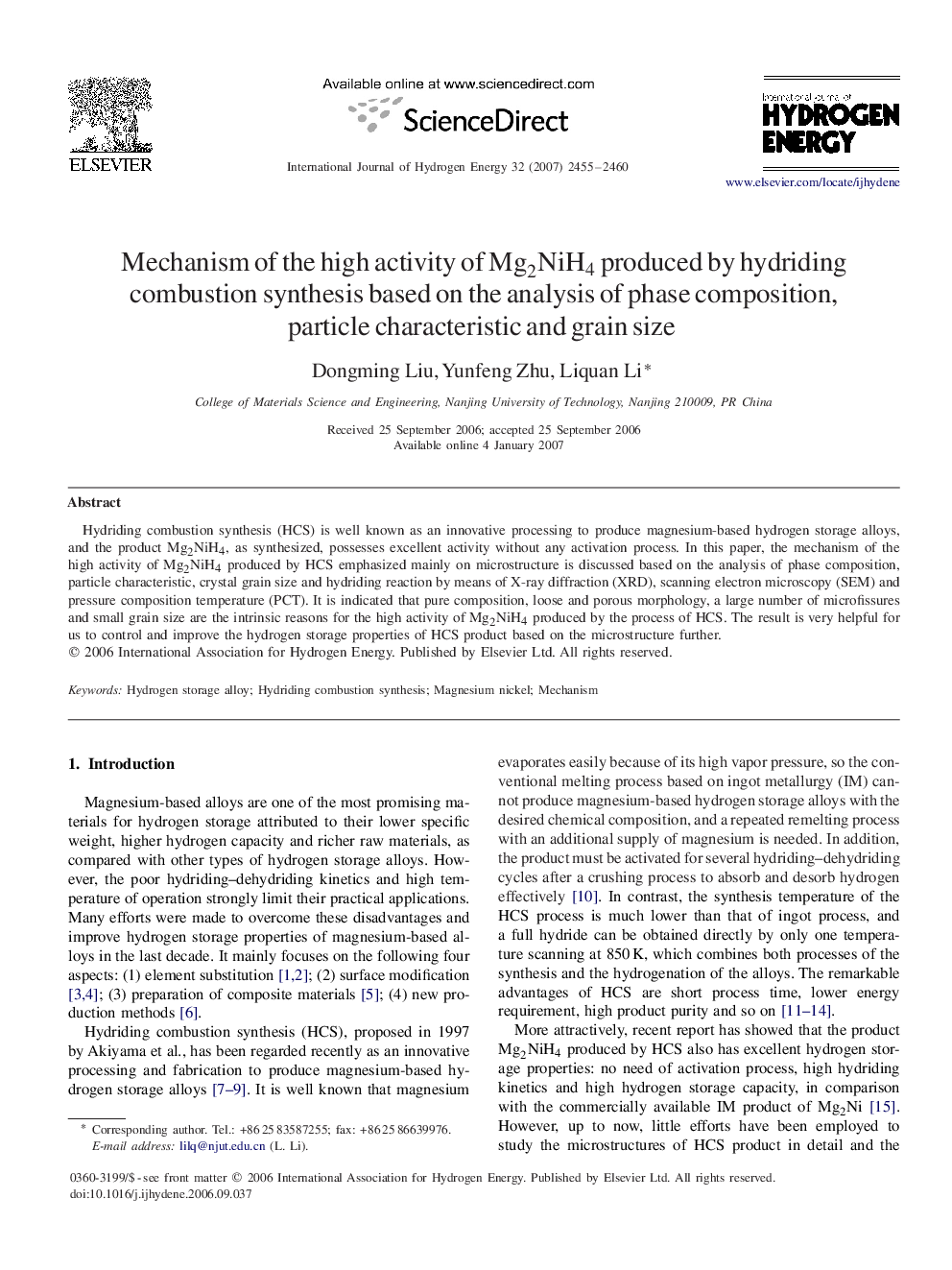| Article ID | Journal | Published Year | Pages | File Type |
|---|---|---|---|---|
| 1280354 | International Journal of Hydrogen Energy | 2007 | 6 Pages |
Abstract
Hydriding combustion synthesis (HCS) is well known as an innovative processing to produce magnesium-based hydrogen storage alloys, and the product Mg2NiH4, as synthesized, possesses excellent activity without any activation process. In this paper, the mechanism of the high activity of Mg2NiH4 produced by HCS emphasized mainly on microstructure is discussed based on the analysis of phase composition, particle characteristic, crystal grain size and hydriding reaction by means of X-ray diffraction (XRD), scanning electron microscopy (SEM) and pressure composition temperature (PCT). It is indicated that pure composition, loose and porous morphology, a large number of microfissures and small grain size are the intrinsic reasons for the high activity of Mg2NiH4 produced by the process of HCS. The result is very helpful for us to control and improve the hydrogen storage properties of HCS product based on the microstructure further.
Related Topics
Physical Sciences and Engineering
Chemistry
Electrochemistry
Authors
Dongming Liu, Yunfeng Zhu, Liquan Li,
